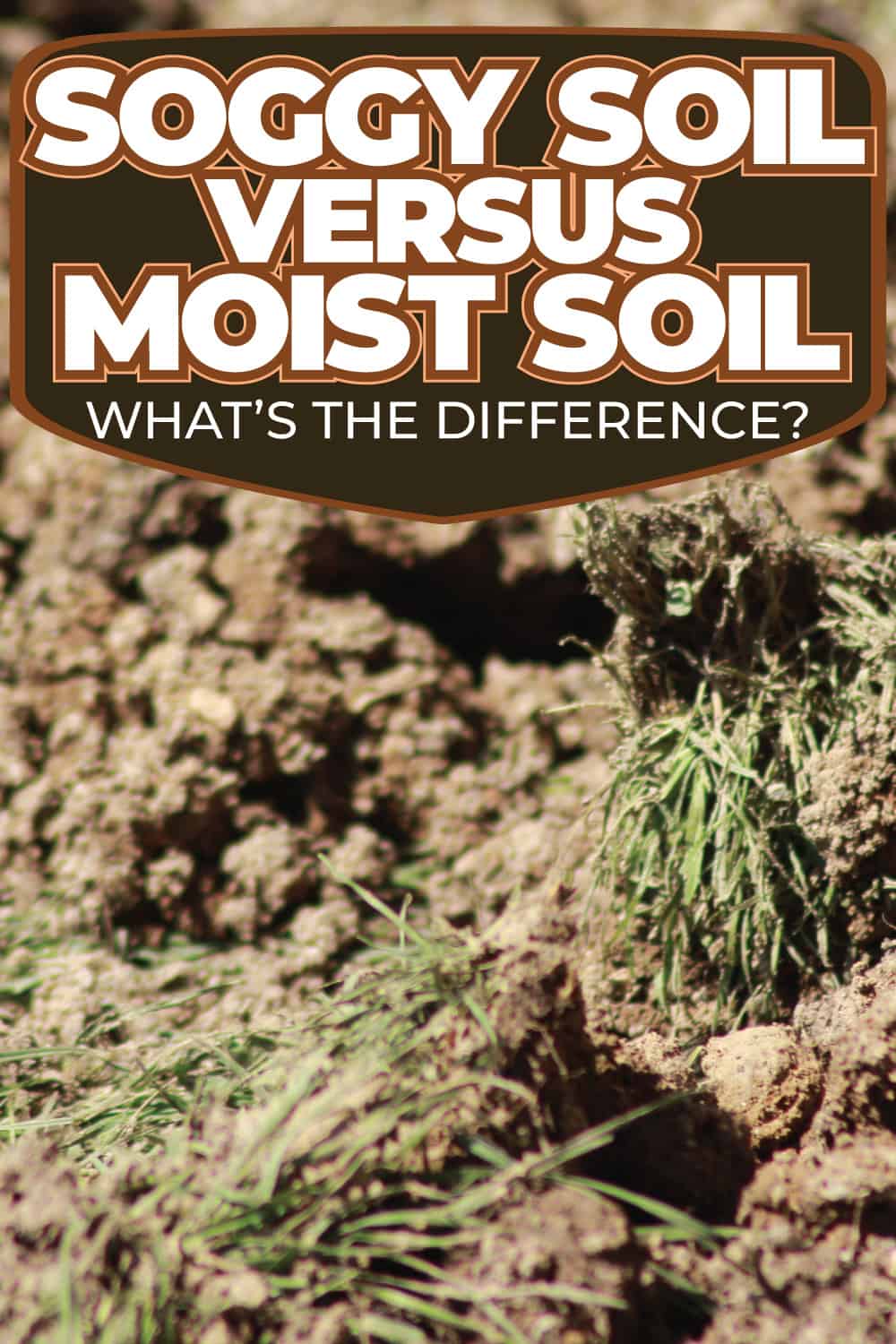In gardening, several terms can easily be confused. One of these instances is with soil water levels. You're in luck if you're trying to figure out the difference between soggy and moist soil! We've done the research and can tell you the difference between these soil consistencies.
Moist soil retains a moderate amount of water without flooding. This soil will not feel overly sticky or muddy. The dirt will stick together but won't hold shape if you try to make a ball.
If your soil is soggy, you may see puddles of water forming. Soggy dirt will also retain its shape if you form it into a ball. It may even keep its shape or split into two pieces when dropped.
Additionally, if you press into the dirt and the hand print left behind is shiny, your soil is soggy and has too much water.
Knowing the difference between these amounts of moisture can help you take better care of your plants. Keep reading to learn more about the differences between soggy and moist soil, how to test your moisture levels, and more!
Soggy Soil Vs. Moist Soil
Soil moisture can be affected by many different things. Some of these things include the type of soil, the amount of sunlight the location receives, how much and how often you water, and whether you have well-draining soil.
A water level tester is one of the best ways to test your soil's moisture level. However, there are some visual clues that you can look for.
Moist Soil
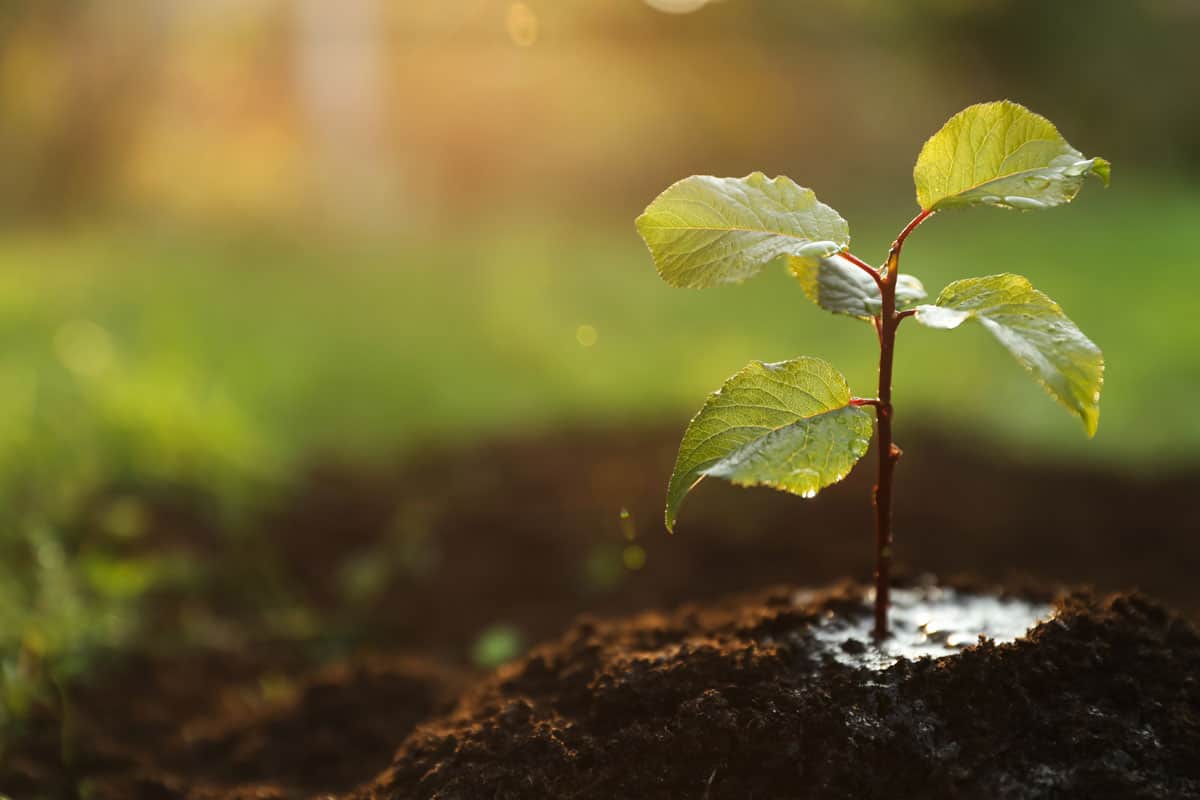
Moist soil is a good balance between wet and dry dirt. At this point, there's enough moisture present to cause the soil to stick together without causing it to hold its shape.
To test this, you should take a handful of soil and squeeze it together to try and form a ball. You have dry soil if the dirt doesn't stick together and easily falls through your fingers. If it sticks together, then your soil is moist or wet.
You can also try to drop the dirt after you've compacted it in your hands. You've got moist soil if the soil crumbles and breaks apart easily. However, if the ball splits in half or keeps its shape, too much moisture is present.
Soggy Soil

In comparison, soggy soil has much more water present in it. If you have soggy soil, you may notice areas of pooling water. It's also possible to notice water filling up areas that were recently pressed down.
Water-logged soil will have a different feel than dirt with other moisture levels. When you pick up soggy dirt, you'll most likely be able to squeeze water out of it. You'll also be able to form a ball with it.
If you drop the soil, it will either retain its shape or break in half. The dirt may also break into multiple large pieces. Soggy soil won't break apart as easily as moist or dry dirt.
Testing Moisture Levels
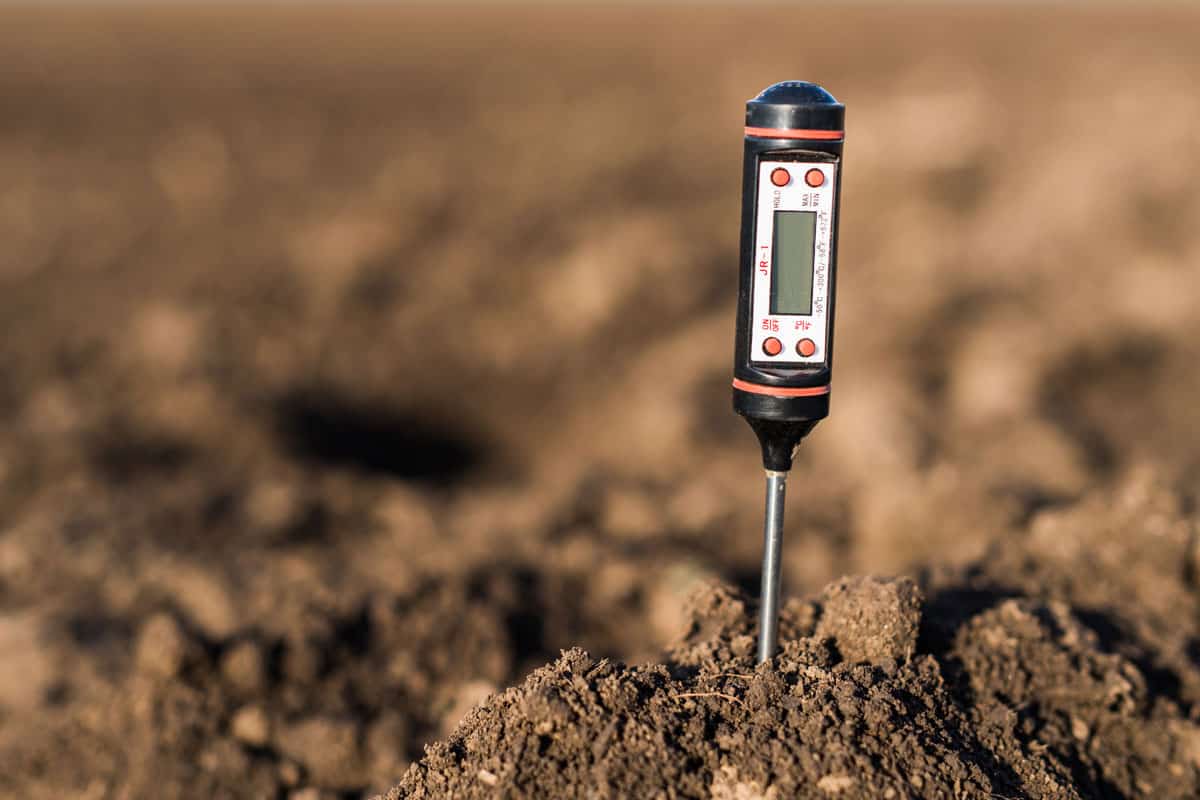
For best results, you should always test or sample soil a few inches beneath the surface. The top layer of dirt will dry out more quickly than the lower layers. So, monitoring this area won't give accurate results on the deeper soil.
There are a couple of ways to test your soil's moisture level. The first is by digging a hole approximately six inches deep. At this point, you can visually inspect the dirt. Remember that moist soil can be formed into a ball but won't leave any excess water in your hands.
Hand Test
You can always test the soil with your hand if you'd rather not dig a hole. Stick your index finger at least one to two inches into the dirt.
Your soil is dry if no dirt sticks to your finger when you remove it. It'll also feel dry when you touch it. If some dirt sticks to your finger, then it's moist. It will also feel wet when you put your finger into it.
Water Measuring Tool
A measuring tool is one of the most accurate ways to test your soil's moisture. These tools typically come with a long, slightly pointed rod with a reader on top.
Testing tools can be simple or complex, depending on your needs.
To use most water measuring devices, you'll stick them directly into the ground. Press it a few inches deep and then wait a few seconds for the reading to appear.
Ideally, your meter will point to a ranged green area. If your reading is lower than this, then your soil is dry. If it's higher, you have too much water present.
Check out this water meter on Amazon!
Does Wet Soil Cause Problems?

Soil that is frequently wet and doesn't get the chance to dry out can cause problems with your plants. Overly wet conditions are ideal locations for breeding fungi and pests. Root rot is a common problem in areas with high moisture.
If your ground is frequently water-logged, it will also prevent your plants from receiving the necessary nutrients. If you see yellow or browning leaves, it could be a sign that there's too much water in the soil.
Wet soil is also more prone to compaction. You should avoid walking in your garden in areas with too much water.
How To Fix Soggy Soil
There are a few ways that you can fix soggy soil. If the problem is overwatering, then cut back on how often you water. You can set up an irrigation system that waters a specific time and amount or allow the soil to dry out between waterings.
Unfortunately, most soggy soil results from poor draining or being at a lower elevation compared to the surrounding area. Fixes in these locations will take a little more patience to fix.
You can try adding compost to the soil for areas with poorly draining soil. Compost will help improve drainage by allowing a better air and water balance in the dirt.
You should also consider avoiding mulch during periods of rain. Mulch will slow down water evaporation in the soil. This can cause problems in areas where there is too much water already.
You can also plant things that enjoy your soil type. Check out this post for more advice "11 Great Plants For Clay Soil With Poor Drainage."
Building A Drain
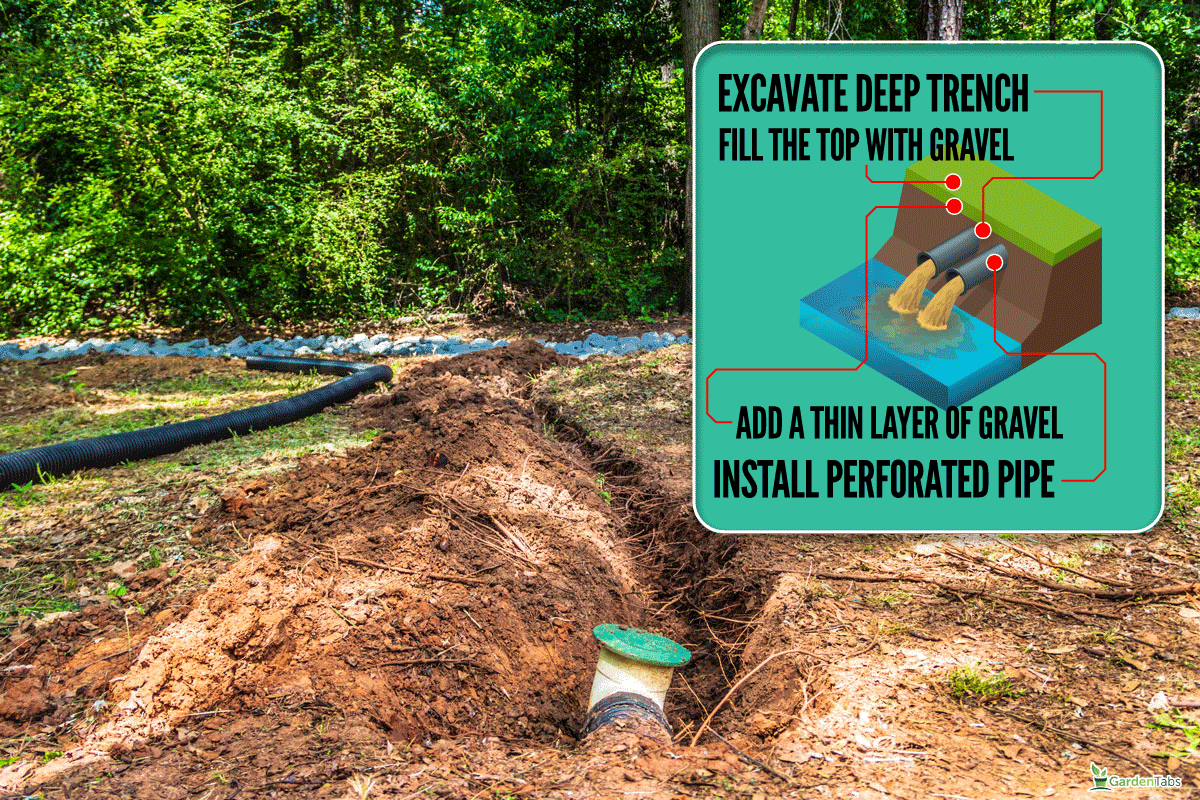
A faster but more labor-intensive way to improve soggy soil is by building a drainage system. A French drain will prevent water buildup and redirect it to your chosen location.
You can build your own with a shovel, some gravel, landscaping fabric, and a perforated pipe.
First, determine where and how deep to build your trench. A shallow hole will be better for moving rainwater. On the other hand, a deep system is good for draining water deeper in the ground.
Ensure that the trench is slightly wider than the pipe you're going to put in. You should also check that your trench has a proper incline to keep the water moving in the right direction.
With the area prepared, lay the landscaping fabric down. Then, add a thin layer of gravel. You'll then lay the pipe down with the holes facing down. This will allow water to climb up, then down, and out of the pipe.
Put another layer of gravel on top of the pipe, being careful to leave space at the top of the trench. Wrap the landscaping fabric around the pipe and gravel. Finally, fill the top with either gravel or a layer of topsoil.
Check out this landscaping pipe on Amazon!
In Conclusion
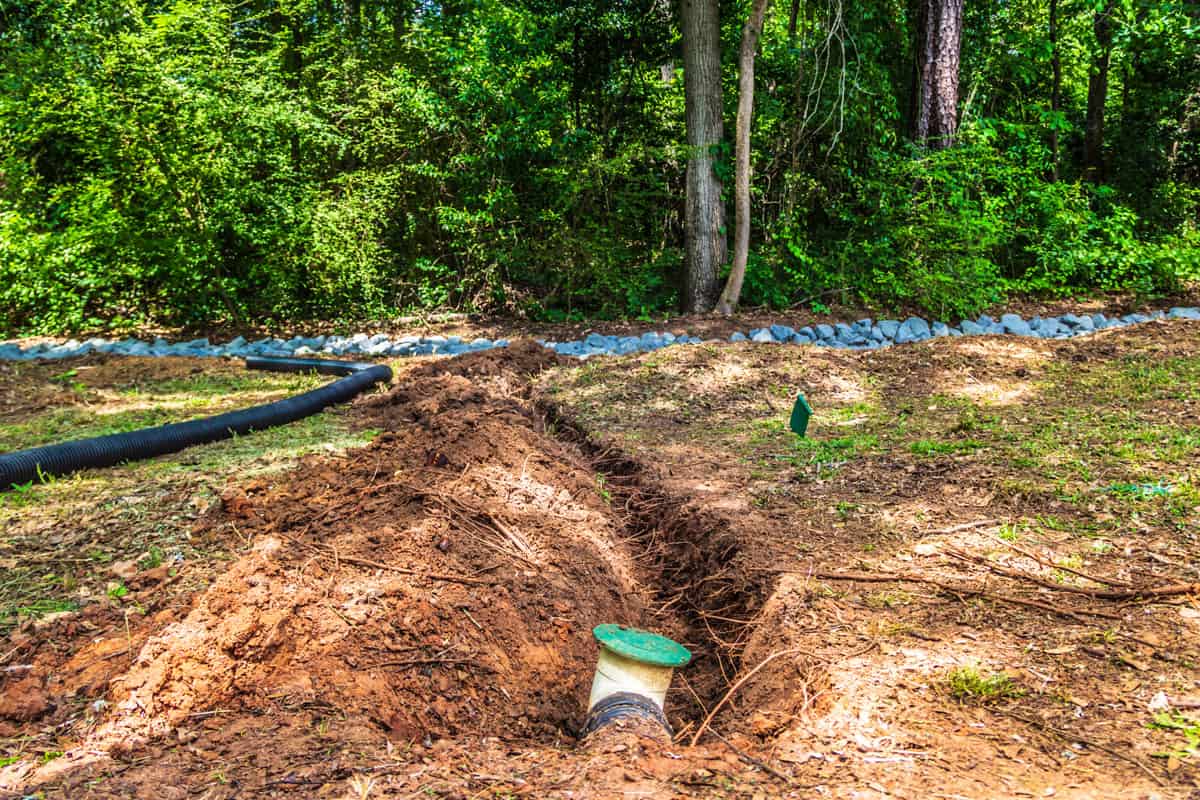
Knowing the difference between soggy and moist soil can help you make the best decisions for your garden. Many plants prefer moist soil, which will look dark brown, slightly holds its shape, and is easily breakable. Growing plants in soggy locations can be more challenging, where the soil seems mossy and wet.
You may also enjoy the following:
Can I Use Play Sand To Amend Soil?
